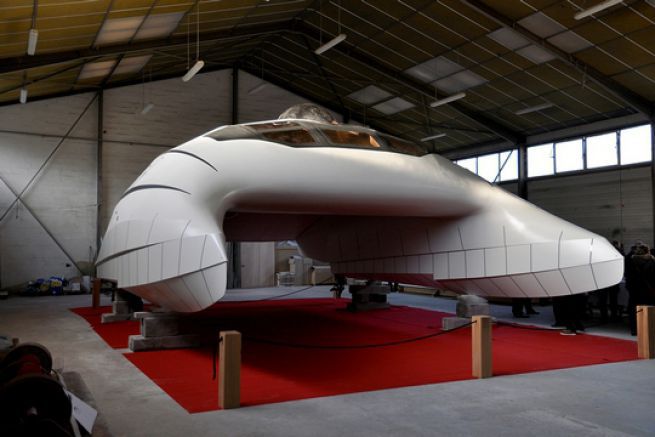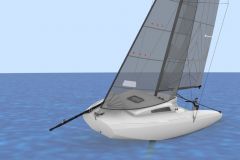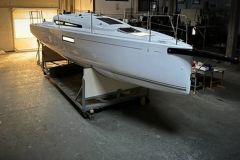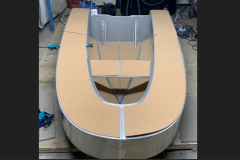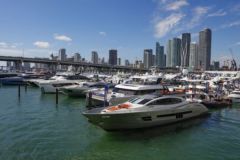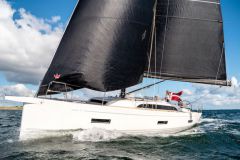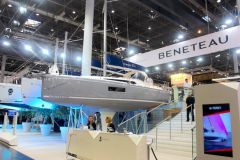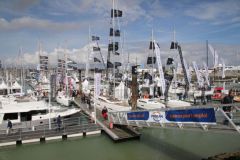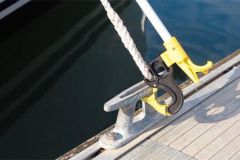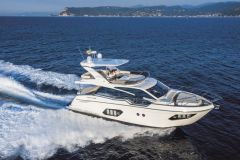Two days ago, in La Rochelle, France, Advanced Aerodynamic Vessels unveiled the prototype of a new type of fast, fuel-efficient vessel. With its outlandish design, the A2V boat introduces a new generation of workboat, said to be partially aerodynamically supported. " These fast, composite-built boats rely on air and water, presenting half the drag of conventional vessels and are therefore particularly fuel-efficient."
"This project is the experimental counterpart to a broader technological adventure: a high-level scientific program to develop low-carbon fast transport vessels, with the support of BPIfrance, the Sea clusters, GICAN and the Ministry of Education and Research, the company is indeed a winner of the 2014 National Innovation Competition."
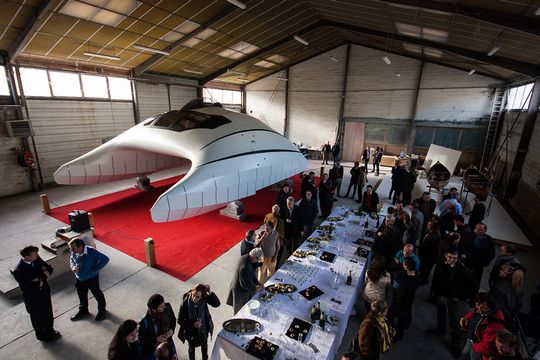
The genesis of the project
Advanced Aerodynamic Vessels is a naval architecture and fluid mechanics design office conceived in June 2013. " Several people combined their skills to create a boat that would consume little energy. Looking to develop a multihull model, we met Matthieu Kerhuel, who was doing his thesis at the École Centrale de Nantes. We thought about a common project and we found something interesting." explains Thierry O'Neill, the commercial director. This is how they developed ships based on the principle of partial aerodynamic lift. " An engineer had tried to develop this idea several years ago, but it hadn't worked. So, we went back to that basic idea."
A design that breaks away from convention
The shape of the A2V is totally new, which allows it to be very fast while consuming little. Inspired by the design of the multihull, the shape of this boat relies on the air to gain speed. "It's no longer a matter of fighting the air to move forward, but of using it to lighten up and thus significantly reduce the resistance to the ship's forward motion."
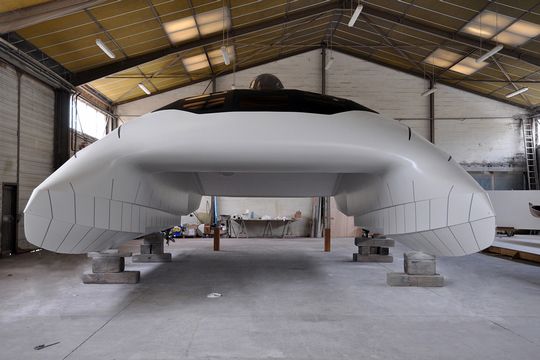
Prototyping and sea trials
After 18 months of design, six of which were spent on construction, " in record time", the prototype " with complex shapes" the 10.5-meter vessel will be used for a measurement campaign at sea to validate the expected energy performance and to calibrate the numerical models it has developed for this new generation of ships. The original shape of this vessel, designed to drastically reduce fuel consumption, is a simple idea, but one that has required thousands of hours of computer calculations. The A2V was also developed in collaboration with the Marc Lombard Naval Architecture office and the Fernand Hervé shipyard in La Rochelle. " For two years, we have been working seriously on this project. We had our calculations checked, validated and confirmed. In fact, we received the innovation award from the Ministry of Research."
To operate, the boat will use the force of the wind, which will propel it at a high speed and thus lift it out of the water and reduce fuel consumption. " The boat is relieved by its wing-shaped center section into which the wind rushes. With a shallow draft, there will be little drag and therefore little aerodynamic braking. Water tends to slow down boats. Here, we will use the air to carry the boat. So it's going to be half as heavy and consume less."
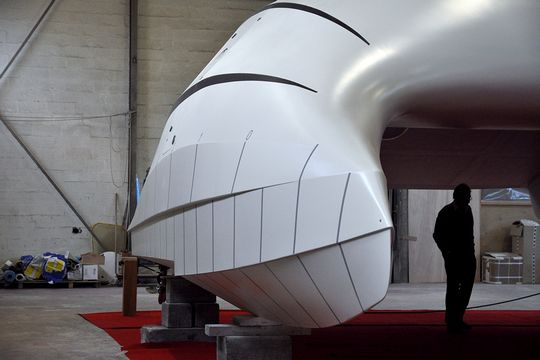
Capable of reaching speeds of 60 knots (111 kilometers) for the basic 70-foot model, the boat required a " very big job on stability." The prototype is a smaller boat that reaches a speed of 40 knots. Indeed, to " to be able to test the partial aerodynamic lift concept at multiple scales, the boat was built as light as possible." In this prototype, the layout has been left aside, in favor of the scientific measuring instruments, omnipresent on board. " The prototype carries a pilot, two measurement engineers and up to 1,500 kg of ballast. It can also carry three additional passengers in the front."
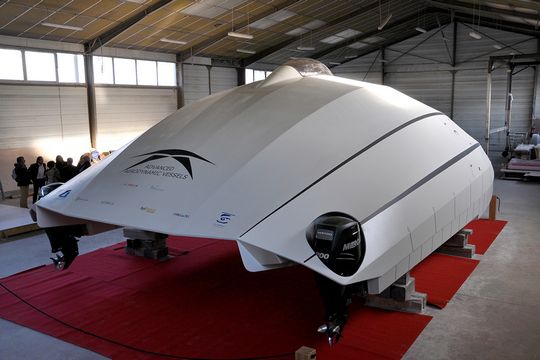
A new concept of workboat
"The adventure was quite quick, but we still had time to carry out market research to find out who might be interested. The main characteristics of the boat are to go very fast, to consume very little and to be quite comfortable. Who might be interested?"
The boat's designers then identified four core targets. The A2V could become a crewboat, a boat used to bring crews to oil platforms. Secondly, it could be used as a " cab boat type passenger transport" or to serve as tender in the great yacht " because of its cool design." Finally, the last use concerns the state action vessels at sea requiring very fast coastal surveillance boats (intercepting drug traffickers, illicit actions thanks to its high speed).
"We have fairly close business prospects in the offshore oil world."
Technical specifications
| Length at waterline | 9 m |
| Total length | 10,5 m |
| Width | 7,4 m |
| Draught under load | 0,4 m |
| Air draft | 3,4 m |
| Motorization | 2 Mercury Verado engines of 200hp |
| Light displacement | 3t |
| Loaded displacement | 4,5 t |
| Payload and ballast | 1 500 kg |
| Number of passengers | 6 |
| Fuel tank capacity | 2 tanks of 140 l |
Photo credit: (A2V)

 /
/ 